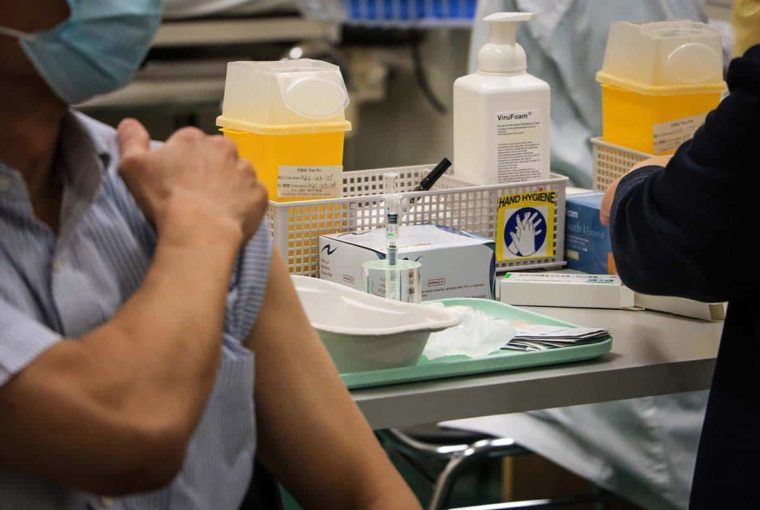Typically, infections occur when bacteria, microbes, and viruses enter the body and start to multiply. When this happens, the cells inside the body are damaged and the signs and symptoms of a disease appear. This is one of the reasons why you should reduce the risk of contracting infections.
However, in order to do that, it’s important that you know how they can enter the body and make you unhealthy. Below are the seven ways infections can spread:
1. Through Saliva
If you’ve been diagnosed with Hepatitis B, glandular fever, or cytomegalovirus (CMV) infection, then you may have gotten one of these diseases through saliva, such as when you and an infected person kiss each other and through direct contact with a contaminated object. An example of this is when you and an individual with an infection have been sharing drinks and many more.
On the other hand, if you have herpes and you think it has something to do with the spread of saliva through shared drinks, then it’s important to educate yourself about this situation and learn how it’s being spread from one person to another. Fortunately, you can check out this resource to learn everything you need to know about how this particular disease is transmitted.
2. As Droplets
This is one of the common ways of spreading infections from one person to another. Generally, some infections are being spread when an infected person starts to talk, cough, or sneeze, releasing small droplets that contain germs, bacteria, and microbes.
Since the droplets travel a very short distance before falling, the person having physical contact with the infected person may breathe in the infection, thereby causing an illness. Also, a spread of infection occurs when you touch your nose or mouth using your hands contaminated by the droplets. Examples of illnesses spread through the air as droplets or aerosol particles are the common cold, influenza, and more.
3. Through Blood Or Body Fluids
Some infections are also being spread through the blood or body fluids. This usually happens when an infected person’s blood or body fluids come in contact with your bloodstream or mucous membrane using a needle stick or through a break in the skin.
The diseases spread through body secretions or blood can include but not limited to Hepatitis B, Hepatitis C, HIV/AIDS, and many more.
4. Through Fecal-Oral Spread
Another way of spreading some infections is through microscopic amounts of feces, which is also known as poo, makes its way to the mouth. For instance, these feces can be passed from soiled hands directly to the mouth and by way of contaminating the objects, food, water, and other sources with feces.
Typically, meningitis, thrush, rotavirus infection, and hand, foot, and mouth disease are some examples of diseases that can be spread through fecal-oral manner.
5. Through Contact With Skin Or Mucous Membranes
If you’re suffering from conjunctivitis, head lice, or ringworm, it’s important to know that they can be transmitted through direct contact with skin or mucous membranes or the thin lining of certain parts of the body, like genitals, mouth, and nose of an infected person. Also, some infections may spread in the event your skin comes in contact with a contaminated object and a surface.
6. Through Sexual Contact
One of the most common infections nowadays is sexually transmitted infections (STIs). Typically, infections like chlamydia, gonorrhea, and syphilis can be spread through sexual contact. This contact means oral to genital, genital to genital, or genital to oral contact.
Thus, if you’re having sex with an infected person, then you’re likely to contract a sexually transmitted infection.
7. Through Food Or Water
Another common way of transmitting infections is through food or water. This happens when there’s an ingestion of a variety of foods or water, which are contaminated with bacteria, germs, and other toxins.
Some examples of food or waterborne diseases can include cholera, salmonella infection, listeria infection, shigella infection, and many more.
How Can You Reduce The Risk Of Spreading Infections?
Now that you know the different ways of spreading infections, it’s time to familiarize some steps that can help minimize the transmission of disease-causing infections. These can include:
- Keep yourself fit and healthy by following a healthy lifestyle.
- Get yourself and everyone in the family vaccinated.
- Properly dispose of tissues right after use.
- Wash your hands frequently, especially when after sneezing, coughing, and using tissues.
- Refrain from sharing glasses, cutleries, and cups.
- Avoid touching your eyes, mouth, and nose.
- If you have children, they should play with cleaned surfaces.
- Opt to stay at home when you’re sick to avoid transmission.
The Bottom Line
Generally, it’s essential to know that not all infections are transmitted in the same manner and some are more infectious than others. For instance, some are spread through droplets, sexual intercourse, blood, or body fluids while others’ way of transmission is through food or water, saliva, and skin or mucous membranes.
With those being said, it’s important to educate yourself about these things to reduce the risk of transmission and avoid getting sick in the long run.




